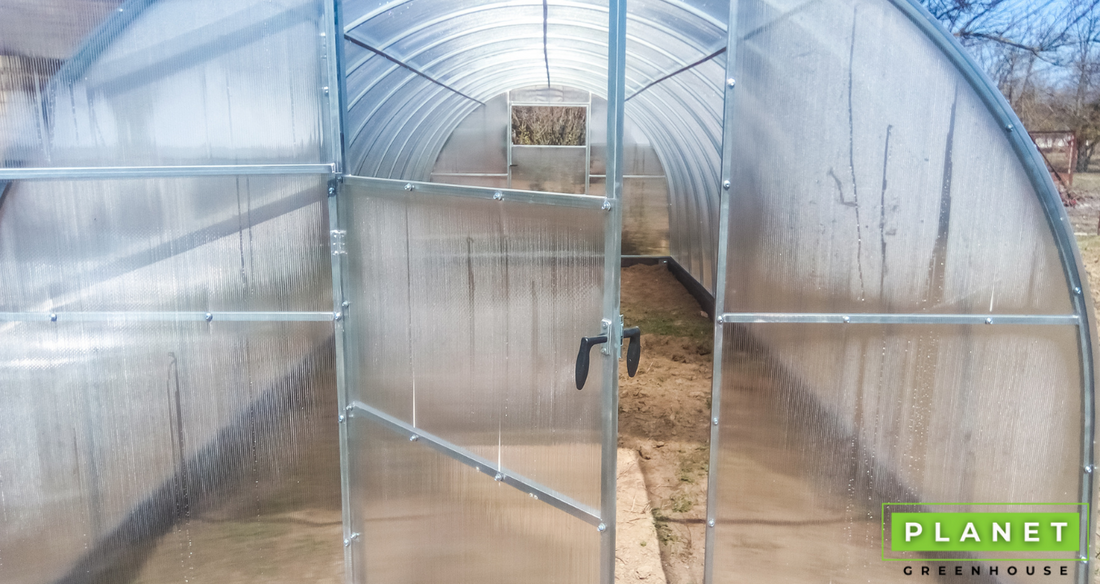Lighting is essential in greenhouses to improve plant growth and production as it is necessary for photosynthesis. Once complemented with adequate nutrients from the soil and fertilizers and sufficient hydration, your plants will grow healthier, stronger, and more resistant to diseases.
A grow light is an electric light with a specified spectrum for photosynthesis. In a greenhouse, the necessity for a grow light is determined not only by the season but also by the type of plants cultivated and the amount of sunlight available.
Some plants require partial sun exposure to develop, even if your greenhouse receives little sunshine. Knowing what plants you are nurturing can help you determine whether or not you need to purchase and install grow lights.
When selecting a grow light for a greenhouse, you must exercise extreme caution. New greenhouse growers typically have issues with the scarcity of light, poor light distribution, unsuitable lighting, or even getting too much of it.
How Much Light Do Plants Need?
Plants that are younger require less light than those that are older.
You can utilize low-level sunlight or artificial light to begin sprouting your seedlings. However, plants require more light as they grow and produce more leaves, partly due to their younger leaves shading the older ones at lower layers. Increasing the lighting intensity as the plant grows in your greenhouse guarantees more light reaching the older leaves.
When plants enter the reproductive, flowering, and fruiting stages of development, they consume less light. Greenhouse plants may be entering the reproductive phase during a time of year when the days are shorter, and natural light is increasingly scarce.
Plants cannot receive too much light, but they can receive too much heat energy emitted by the light. When the environment and temperatures rise to the point where all of the water taken in by the plant is utilized to cool the plant, the plant's growth activities shut down.
You may also use proper shading to cool the greenhouse when all other practical cooling techniques have been applied, but more cooling is still needed. On the roof of your greenhouse, put a white or silver-colored shade cloth as light colors reflect heat. Fabrics in black or green absorb heat and release it onto the plants.
What Are The Types Of Greenhouse Grow Lights?
A plant-growing artificial light should produce a balance of warm and cool light that mimics natural sunlight. When developing and maturing, plants require shorter, warmer wavelengths of blue light. For flowering and production, plants, on the other hand, require longer, cooler wavelengths of light in the red and orange spectrum.
In greenhouses, four basic types of lighting can be used.
Incandescent Light
Incandescent light bulbs are electric lights that increase the temperature to make them glow with visible light. You should not set them near the plants because of their heat. It is an excellent way to extend the day for an easily installed lighting device.
High-Intensity Fluorescent Light
Fluorescent lighting is more efficient than incandescent lighting in turning power into the light without wasting heat. It also helps save energy in large spaces.
A standard fluorescent bulb will suffice for regular houseplants and seed sprouting; however, the light intensity will be inadequate. This type of lighting is an excellent choice for a greenhouse with little natural light. It is also suitable for propagating spaces or growth rooms.
High-Intensity Discharge (HID) Light
HID lighting is a fine choice for a greenhouse since it is affordable. When it comes to additional greenhouse lighting, many farmers use HID as these lights convert power to light very efficiently and have a high light intensity.
This type comes in two varieties:
- High-Pressure Sodium (HPS) Bulbs, rich in the red spectrum, encourage growth and flowering. When plants in a greenhouse receive enough natural light to keep them growing normally, you may use this lighting to extend the photosynthetic day. HPS is more efficient than metal halide bulbs at converting electricity to light energy.
- Metal Halide (MH) Bulbs provide more blue light, making them perfect for vegetative growth. Their spectrum is more balanced than that of HPS. Greenhouse growers use them while a plant is in its early stages.
Light-Emitting Diode (LED) Light
This type of lighting aids in plant growth by maximizing blue and red lights to provide balance for plants. LED lights are effective at all stages of plant development.
Instead of using green or yellow light, LED lights optimize the light spectrum for photosynthesis. They are compact and easy to install and cost more than fluorescent lights, but they consume half the power and last five times longer.
Do I Need Grow Lights In My Greenhouse?
For plants to thrive in a greenhouse, grow lights are essential.
Grow lights come in a wide range of types, designed to function alongside different plants. And because several lighting innovations are still in development, they are more expensive since they address the inadequacies of the previous year's breakthroughs.
There are various alternatives for providing adequate lighting to your plants all year. Purchase one after examining your particular needs, as lighting necessities vary from one plant species to another.


